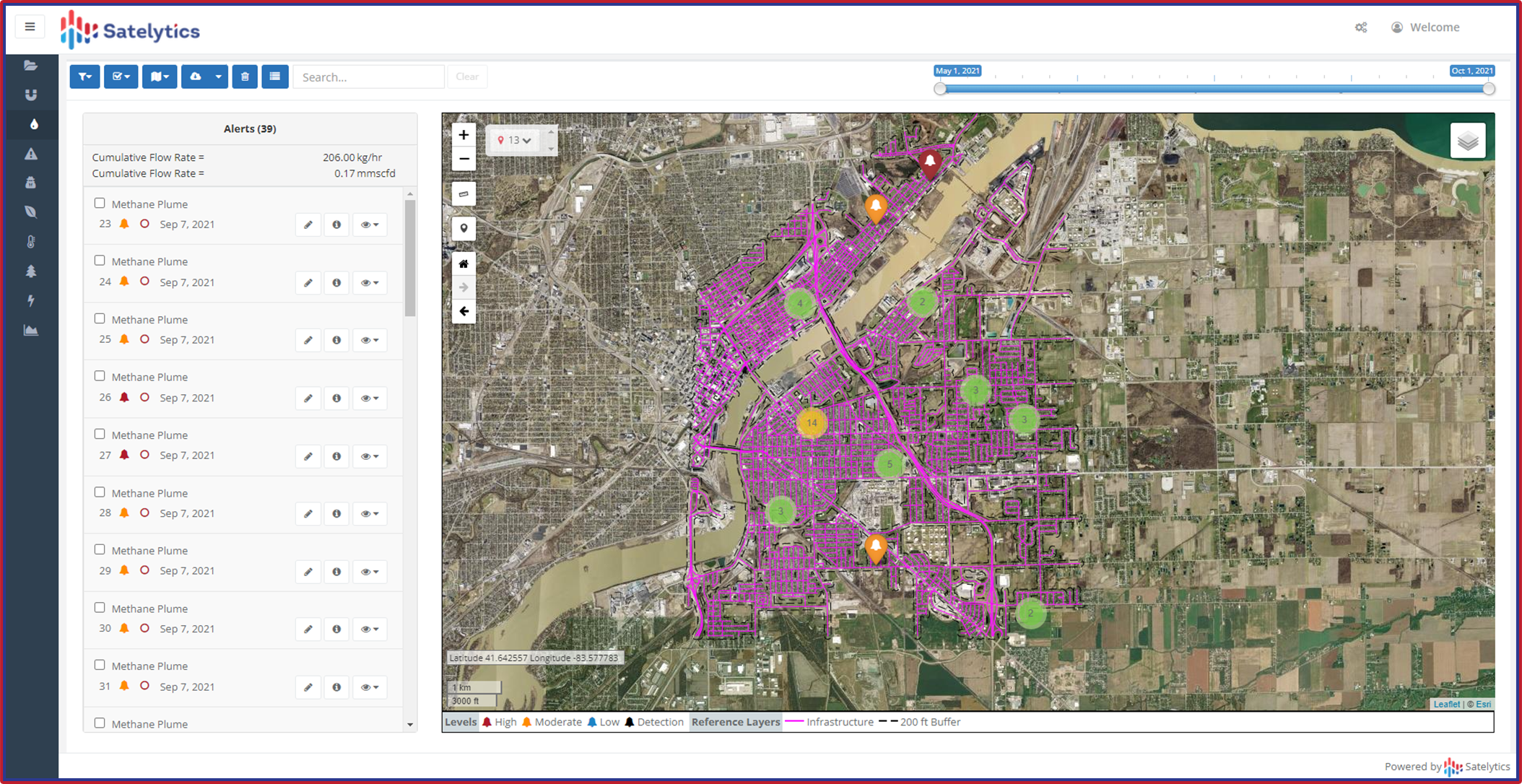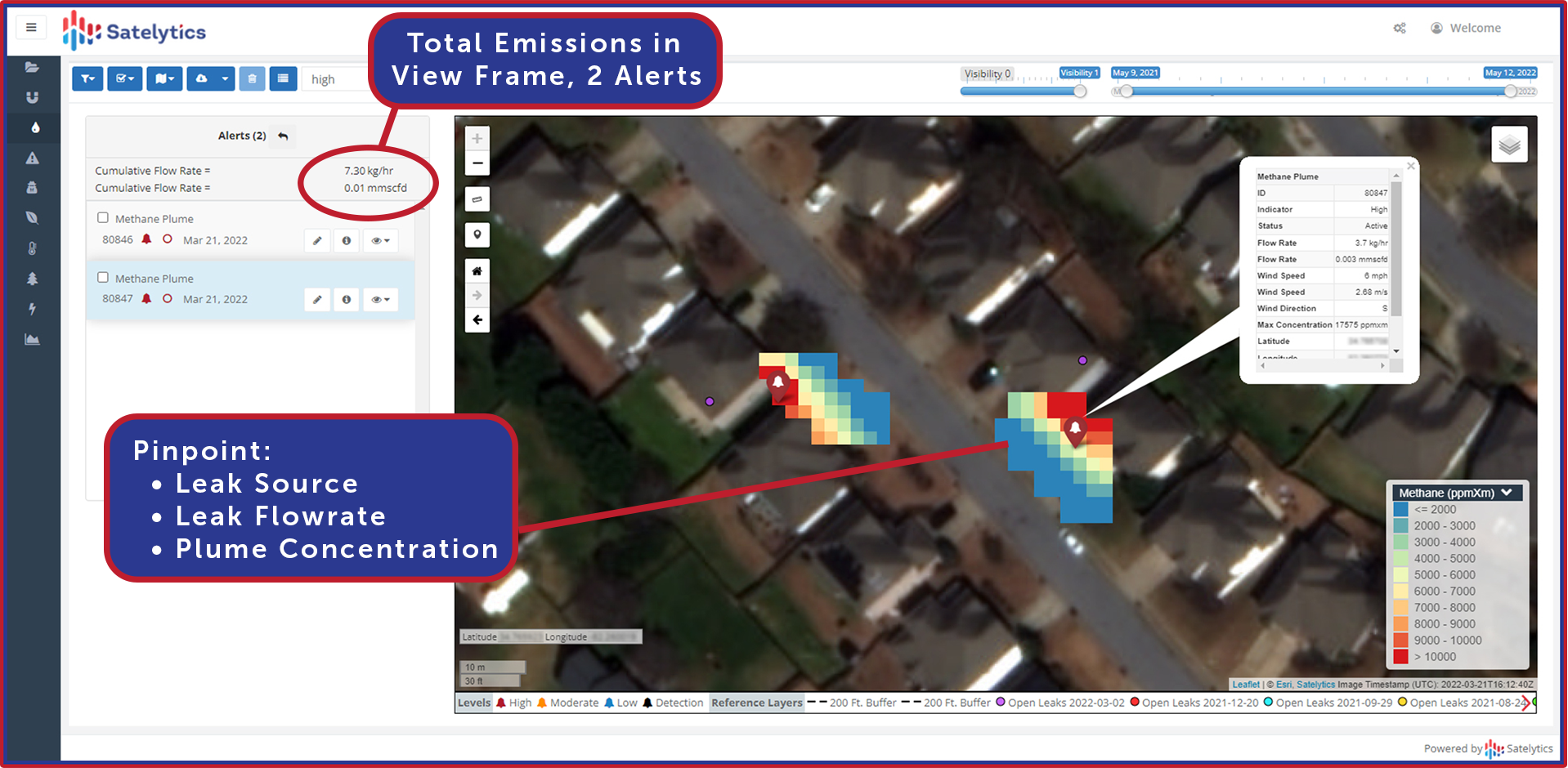
• Oil & Gas,Electric & Gas Utilities,Pipeline Operators

• Oil & Gas,Electric & Gas Utilities,Pipeline Operators
Satelytics’ methane leak detection provides quantification and location of plumes for local distribution companies (LDCs). We talk often about the quantification capabilities of our methane algorithm. And rightly so, as loss of product and pollutive emissions are front and center in every boardroom.
While they frequent headlines with pretty satellite pictures, the NGOs detecting methane cannot identify emissions sources under 100 kg/hr. This leaves field teams to aimlessly search for smaller leaks, especially those in prioritized territories like urban areas. Detecting leaks over large asset areas from space is only useful if those leaks can be remediated on the ground.

Satelytics monitors entire asset areas with the precision needed to direct field crews.
Our methane leak services for distribution utilities are proving their worth by repeatedly leading field techs to leak sources. Satelytics calculates the source of the methane leak, the flow rate at the source, and the plume conentration gradient. These measurements have been ground truthed by our expert partners in the LDC sector, Southern Cross. Together, Southern Cross and Duke Energy have rewritten the book on how to achieve leak detection and repair (LDAR), implementing geospatial analytics from Satelytics.
How close and how accurate are we talking? In the field, over thousands of leak alerts, Southern Cross gas technicians have found:

With high-resolution data, Satelytics pinpoints methane plume sources and emission rates.
Geospatial analytics is enhancing the leak survey process for utilities and field techs. Southern Cross is reporting excellent results with our alerts, starting at the meter closest to where the leak was detected, working their way out from there. With Satelytics alerts directing Southern Cross in the field, our largest gas utility customer is working through its backlog of leaks and transitioning to a proactive emissions reduction program.
Call us today to learn more about field verification and our methane leak detection capabilities!